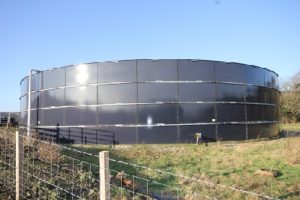Ayrshire Soil & Nutrient Network: 2nd meeting – event summary
19 February 2019This was the second meeting of the Ayrshire Soil & Nutrient Network and the focus this time was on counting the value of slurry
Elaine Watt, SAC Consulting, led the second meeting, giving a brief 5-minute overview of what the Soil & Nutrient Network series was aiming to achieve. She then went on to look at the financial value of slurry to a business, using standard figures (available in the Farm Business Handbook). Elaine explained how farmers can use the Technical Notes to help them to create an effective nutrient budget, however, the importance of testing all slurries and manures cannot be underestimated as it is key to ensuring that any calculations are accurate (there can be a huge variation in nutrient value between slurries). For a more accurate nutrient budget, it is recommended that the nutrient value of the slurry or manure you are about to apply is tested – this may mean testing it several times in the same year since depending on the application times.
Everyone was then given the opportunity to try a worked example scenario, using the step by step calculations. Having had a trial run through during the meeting built confidence within the group to allow them to return home to calculate a nutrient budget which will hopefully show that money can be saved from reductions in artificial fertiliser requirements. This is not only beneficial for farm profitability but will also ensure that no excess of nitrogen is applied above crop needs.
Key messages 
- Analyse slurry and farmyard manure to be applied
- Calculate the crop nutritional requirements
- Using the results from the organic manure analyses, calculate the nutrients being applied
- Comparing the crop requirements v organic fertiliser nutrients applied will show if there is any shortfall that needs to be addressed
- Don’t forget the importance of addressing any soil pH shortfall – a pH imbalance can restrict nutrients available for crop uptake
Find out more about what has been discussed at the other Soil & Nutrient Network events here
- Practical Guide: Nutrient budgeting I – The Benefits to your Business
- This practical guide looks at the benefits of creating and using a nutrient budget for your farm business.
- Topics: Climate Change
- Practical Guide: Nutrient Budgeting II – Getting Started
- This practical guide looks at what factors you need to consider when making a nutrient budget for your farm, fertiliser recommendations and how to get the most out of your nutrient budget.
- Topics: Climate Change
- Technical Note (TN699): Agricultural use of Biosolids, Composts, Anaerobic Digestates and other Industrial Organic Fertilisers
- Organic fertilisers such as biosolids, composts, anaerobic digestates and industrial wastes can be useful and cost-effective crop nutrient sources that can improve soil quality. This technical note outlines their use in agriculture.
- Topics: Climate Change, Soils and Water Management
- RAMS – How to complete a Risk Assessment for Manure and Slurry map
- This guide from Farming & Water Scotland explains the benefits of a RAMS map and gives step-by-step guidance on how to create one.
- Topics: Water Management and Environment
- Farming For a Better Climate: Practical Guide on Optimising Organic Nitrogen
- This Farming For a Better Climate document was included as part of the delegate pack for those who attended the FAS event 'Waste more, fert. less!'.
- Topics: Climate Change
Sign up to the FAS newsletter
Receive updates on news, events and publications from Scotland’s Farm Advisory Service


